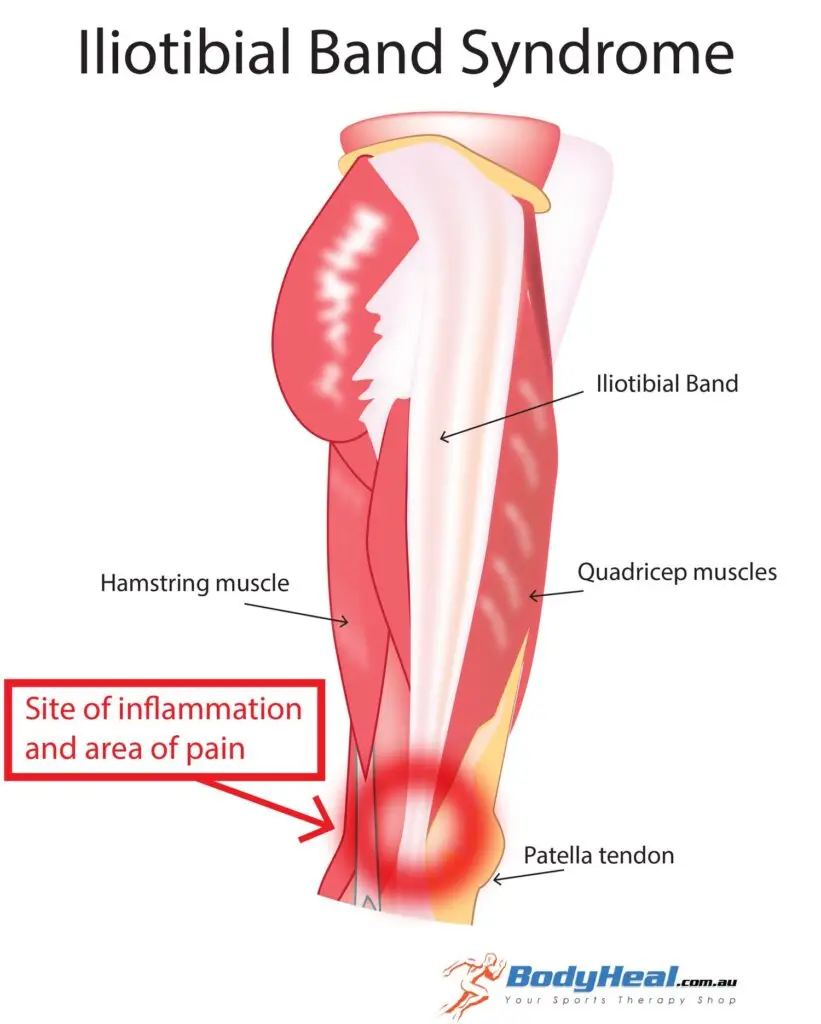ITB Syndrome is a really interesting condition for 2 reasons!
- Because it requires a lot of attention and assessment to see why this occurs – makes our job more challenging and more fun
- But it can actually be a really debilitating condition if not addressed! Stopping you from doing all your sports or hobbies and even making you apprehensive about your every day tasks


The iliotibial band (ITB) is a ligament which spans from the side of the pelvis all the way down into the side of the knee! And it is a stability structure, supporting knee and hip movement while also helping with shock absorption when walking, running or jumping.
There are some key factors with regards to ITB that are very important:
- The ITB band is a ligament, it doesn’t stretch and its not supposed to either. Research has shown that it does not lengthen with stretches, but there are 4 groups of muscles which attach directly and indirectly through the ITB – TFL, Gluteus (glute med and glute gax) hamstrings (biceps femoris) and the quad muscles on the outside (vastus lateralis). With these muscles, we can release them, indirectly reducing the tension through the ITB.
- The questions that you must ask is why? Why does that ITB become very tight? There are 2 reasons:
- There are specific muscles that are quite weak, placing more tension on the ITB.
- Or you have overloaded the leg, placing more pressure on the ITB. This occurs when you have increased the load too much and too soon through an increase in any one of the variables – frequency of exercise, duration of exercise, intensity of exercise, not enough recovery.
So this is where we come in as physiotherapists – assessing the different variables and working with you to become pain-free and living your life again!
Give our friendly reception team a ring to get rid of your pain and get you back to smashing your goals!





